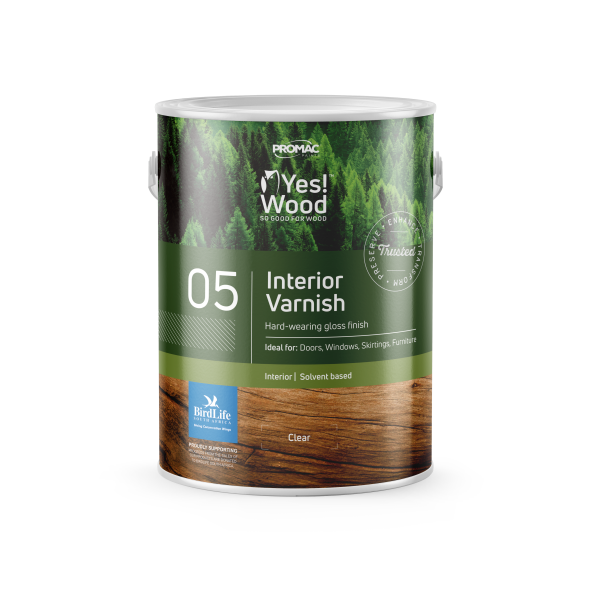Yes Wood 05 Interior Varnish: Scratch-resistant qualities
-
Yes Wood Interior Varnish 05 is a high-quality, hard-wearing gloss, linseed oil-modified alkyd varnish that has been specifically formulated to provide scratch and water-resistant qualities for use on interior natural wood surfaces.
-
Excellent water resistance
Mar and abrasion resistant
Excellent grain filling
Lead content, less than 90 ppm
-
This product will cover approximately 10 - 14 m²/litre per coat. Surface porosity, profile, application tools and technique will affect practical spreading rate.�
-
Apply by brush, super fine roller or spray. Apply one coat of Yes Wood Interior Varnish 05, 50% diluted with mineral turpentine, allow to dry as directed under drying times. Sand first coat lightly as mentioned above. Dust off with a damp cloth. Apply 2 to 3 coats of Yes Wood Interior Varnish 05 to achieve desired finish. The varnish may be sprayed after dilution with mineral turpentine, as mentioned above.�
-
Clean all tools (brushes, rollers and spray equipment) while wet with mineral turpentine after use.�
-
1 L & 5 L
Colours
White-eared Barbet
The most distinctive feature of this rather darkly coloured barbet is the broad white stripe curving from behind the eye down the side of the neck and from which it takes its name. This bird has a penchant for spending long periods perched on the highest and most exposed treetops in its forested habitats.
White-eared Barbets are gregarious birds occurring in small flocks that likely comprise extended families. They are cooperative breeders with every group member assisting in incubating the eggs and feeding the young. All group members roost together communally every night in a tree hole and up to 11 individual birds have been observed to pack into a single cavity at dusk.
As expected in such a social bird, they are noisy creatures with much group chattering. Many of their loudest and most far-carrying calls are very strident and parrot-like in nature.
The distribution of this barbet is fairly restricted in South Africa and it is found only along the coast and immediately adjacent areas of KwaZulu-Natal. Like many other local barbets, it has expanded its range in recent years. Once present only as far south as the Tugela River mouth, it has spread southwards as far as the Eastern Cape border. It has also moved inland becoming increasingly widespread in Durban’s well-wooded suburban gardens. There are even recent records as far inland as Pietermaritzburg.
Bird illustrations are from Sasol Birds of Southern Africa published by Struik Nature. Illustrations © by Norman Arlott are used with kind permission of the Arlott family.
www.struiknature.co.za
Status and biology
Common resident in coast forest and bush, often near wetlands. Moves to lower altitudes in winter in eastern Zimbabwe. Usually in groups.








